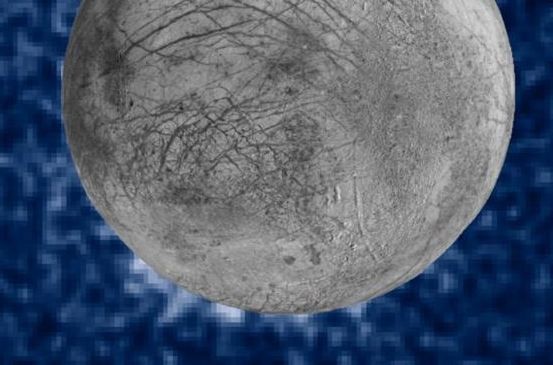Scientists have again observed what they're certain are plumes of water emanating from Europa's south pole, confirming a discovery first made in 2001 but only observed intermittently since.
The discovery of the water vapor plumes, which are likely caused by erupting cryogeysers, also lends more credence to the existence of a vast subsurface ocean on Europa, which has a water ice crust.
The latest evidence was discovered in images collected by the Hubble Space Telescope. The images show the absorption of ultraviolet wavelengths by what researchers believe are water plumes erupting from Europa's south pole.
The new Hubble observations show four separate instances of the phenomenon captured in 2014 and 2015.
"If there are plumes emerging from Europa, it is significant because it means we may be able to explore that ocean for organic chemicals or even signs of life without having to drill through unknown miles of ice," said William Sparks, an astronomer at the Space Telescope Science Institute in Baltimore.
Astronomers are now more confident that water and other liquids are present on the surface of Europa, and can be collected and studied by future NASA missions without drilling through layers of ice. No spacecraft has landed on Europa.
"Hubble's unique capabilities enabled it to capture these plumes, once again demonstrating Hubble's ability to make observations it was never designed to make," said Paul Hertz, director of NASA's astrophysics division.
Back in 2012, a team of researchers led by Lorenz Roth of the Southwest Research Institute found evidence of water vapor using Hubble. This team, however, found only one instance of plume activity, using a different method.
Scientists used Hubble to watch Europa's silhouette as the moon moved across Jupiter's bright background. Using ultraviolet light, they looked for signs of plumes coming from the Europa's surface. They did this 10 times over a period of 15 months and saw what could be plumes on three occasions.




























